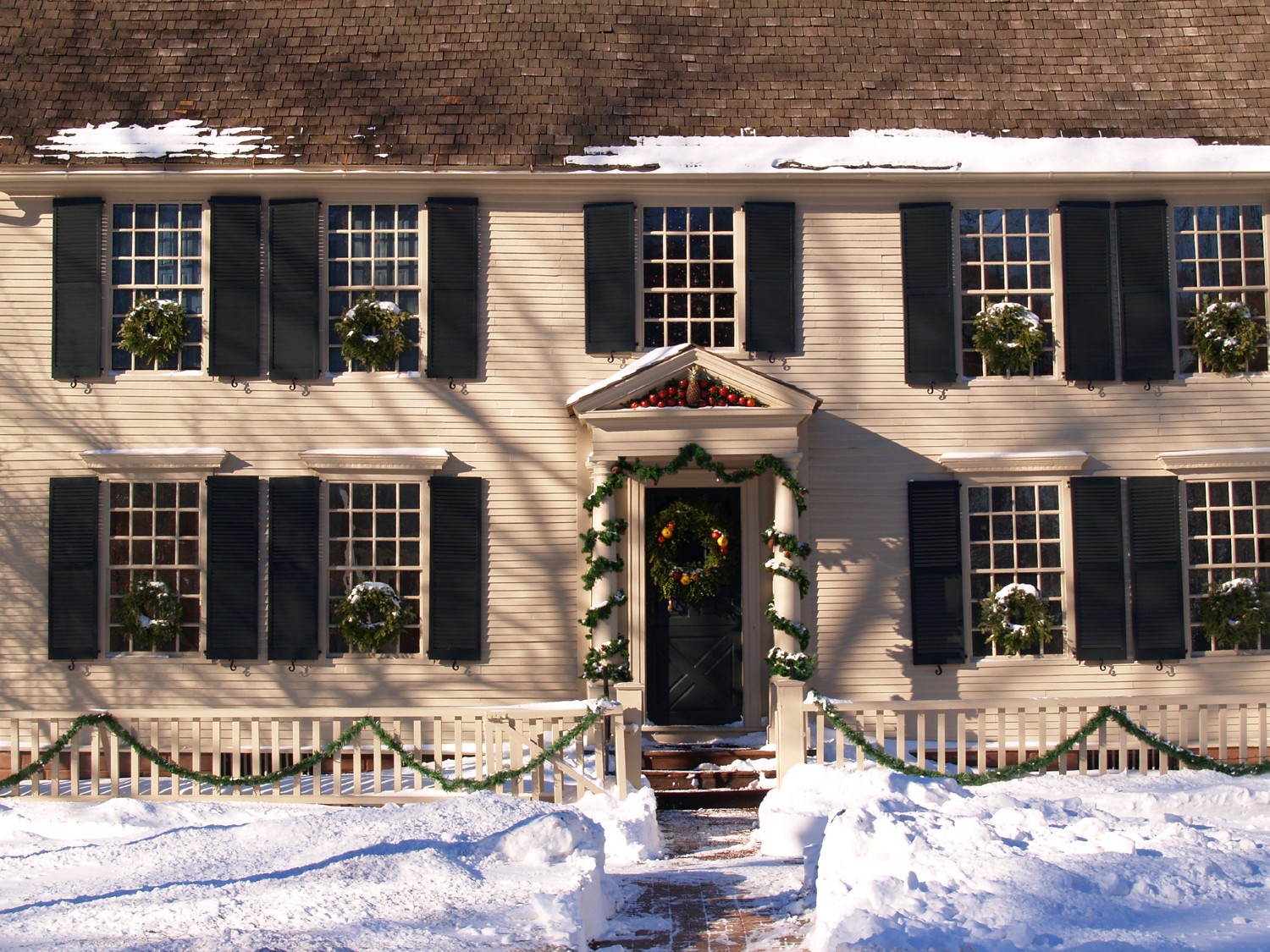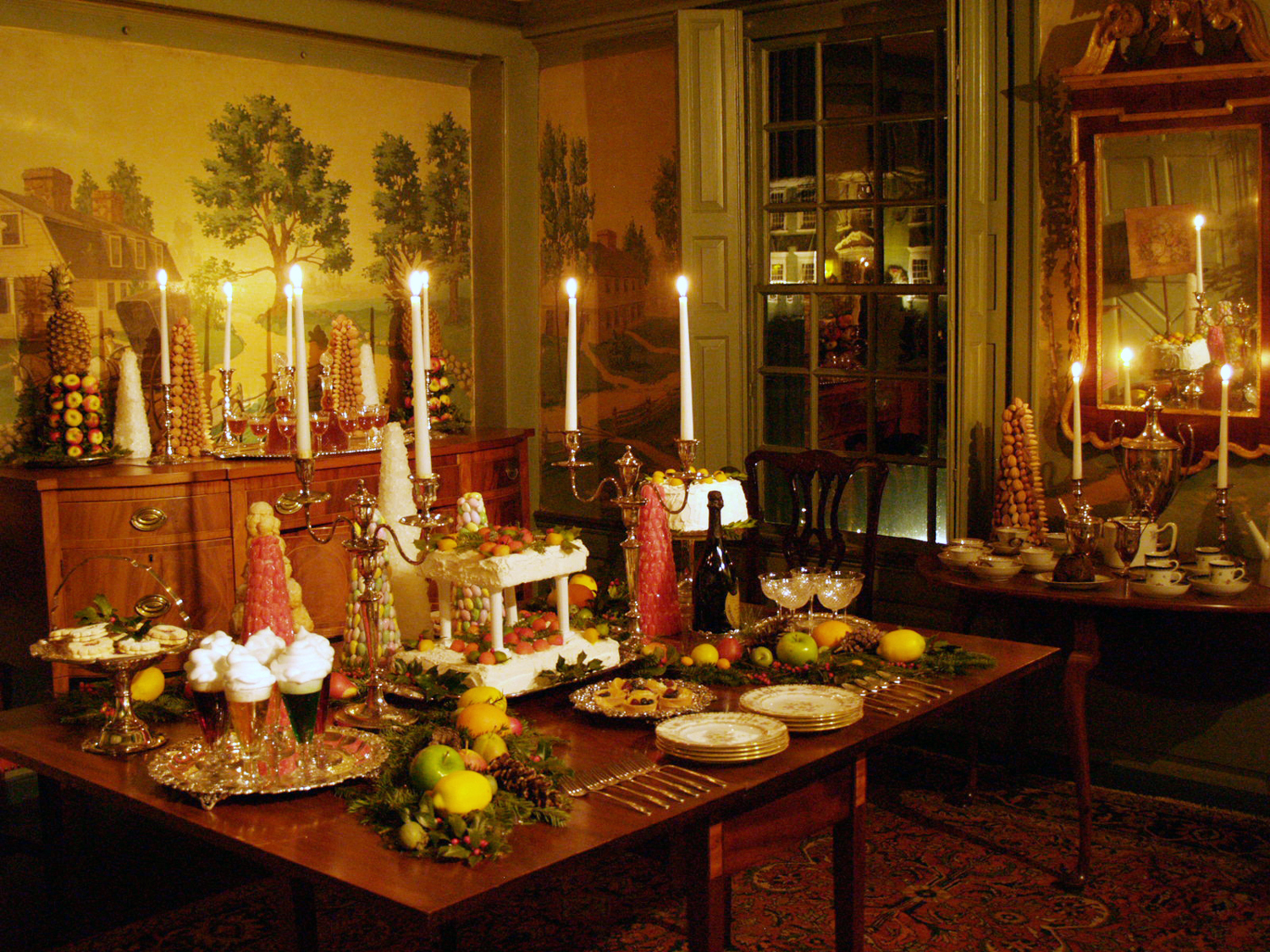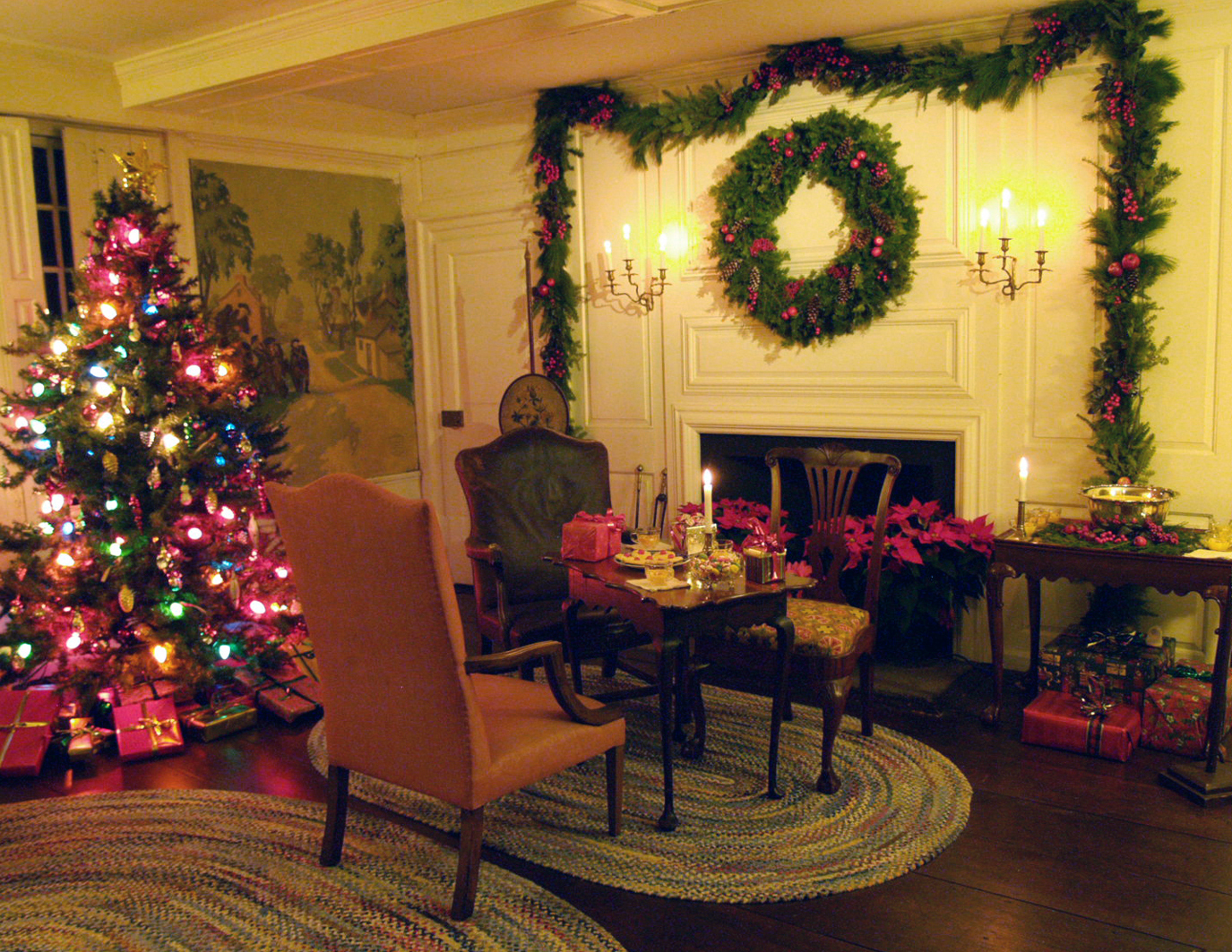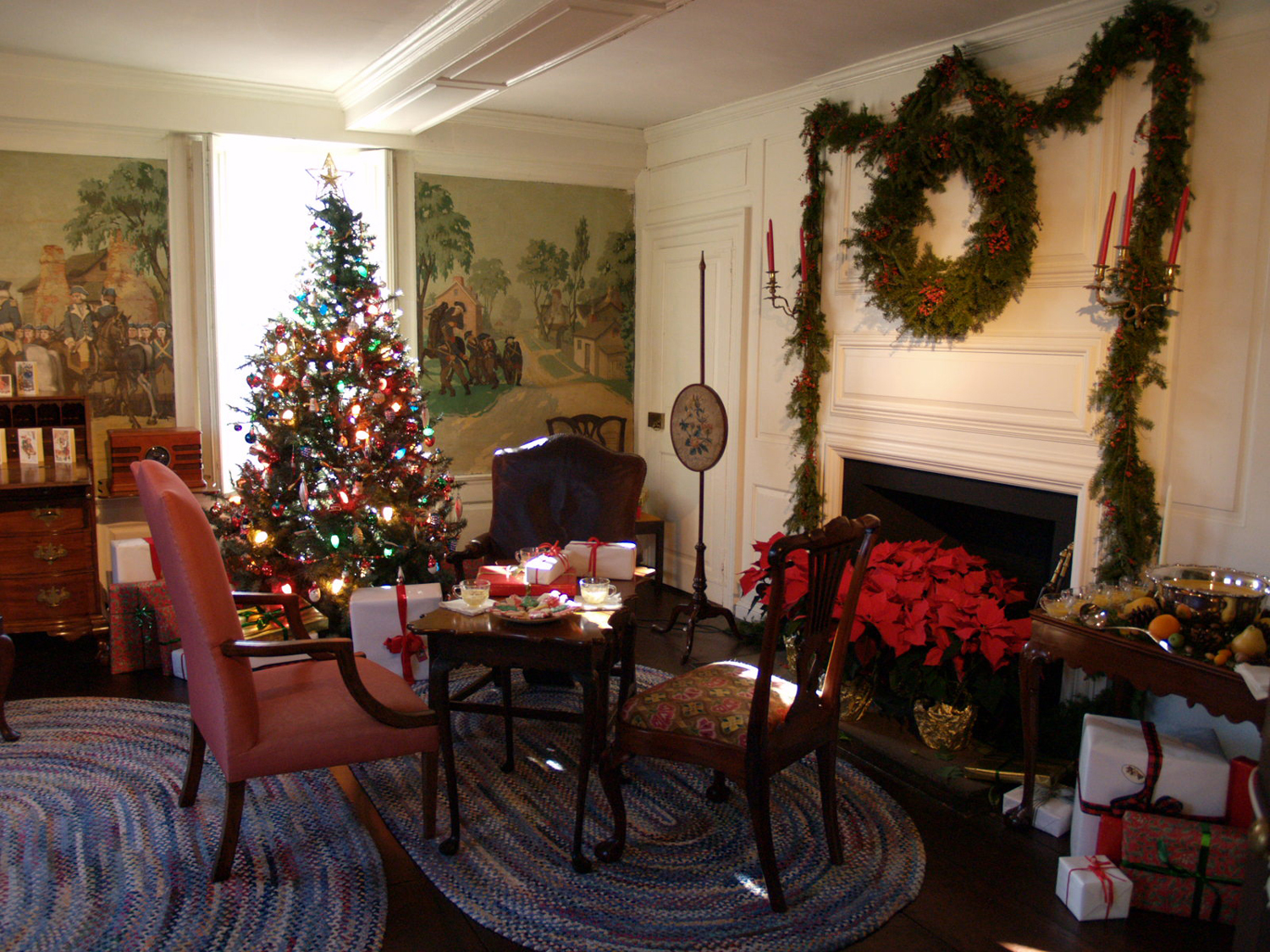WETHERSFIELD, CONN. — To the casual observer it might appear that the Webb-Deane-Stevens museum’s three houses are closed the first ten days of December. Behind the tranquil façade, however, an all-hands-on-deck, fast-paced, historical-holiday-decoration free-for-all took place, using armloads of greenery and native plants, loads of decorations from days of yore, and clever food-styling tricks. The results show in detail how Christmas in Connecticut evolved over the past 300 years.

The exterior of the Webb House, built in 1752, decorated for Christmas with wreaths on the front door and in the windows. In 1781 General George Washington met with French General Rochambeau at the Webb House and planned the military campaign leading to the end of the Revolutionary War. —All photos by Charles Lyle
This season’s celebration kicks off at a holiday preview party, on Friday, December 11, from 5 to 8 pm. Guests will partake in a candlelight preview of the holiday decorations throughout the museum, stroll from house to house. Food and drinks as well as live holiday music will be offered. Admission is $30 at the door.
“Three Centuries of Christmas” evening-candlelight tours of the three elegantly appointed, historic houses —featuring guides in period dress sharing the history of Christmas and New Year’s Day — will be December 18–19, 5 to 8 pm. Daylight tours will be Saturdays, 10 to 4, and Sundays, 1 to 4, December 12–January 3. Admission is $12 adults, $10 seniors, $6 student/children, $28 family (two adults, two children).

Dining room in the Joseph Webb House set up for a festive dessert, circa 1940. The dining room was redecorated by Wallace Nutting with painted murals depicting historic houses in Connecticut and several of the houses he personally owned as part of his “Chain of Colonial Picture Houses.” The furniture includes a Federal period sideboard and table and English Chippendale chairs with an Oriental carpet on the floor, reflecting the taste of the Colonial Revival period, circa 1940.
This historic view of holidays past begins in the Silas Deane House, circa 1770, where New Year’s Day was the main holiday, rather than Christmas, due to the Puritanical customs that lingered in New England. The house reflects the preparations for the Deanes’ “New Year’s Day Calling,” when prominent gentlemen in the community would call on the lady of the household. It was also the day when individuals who owed the family money would meet privately with the master of the house to settle their debts or make a New Year’s resolution to provide goods or services to settle their accounts in the coming year.
The Isaac Stevens House is decorated to depict the holiday celebrations of a middle-class household during the early to mid-1800s, when many of the Christmas traditions known today were adopted in New England. The “best” parlor features a tabletop tree decorated with candles, gilded eggshells and edible treats, in keeping with the era. The Stevens House also includes a special exhibit with enlarged color illustrations by Thomas Nast from the museum’s rare 1888 copy of Clement Moore’s An Account of a Visit of St Nicholas. The colorful images tell the tale of how the secular Christmas known today was created in the early Nineteenth Century, which coincides with the museum’s interpretation of Christmas at the Stevens House.

The Yorktown Parlor at the Webb House decorated for Christmas Eve. The tree is decorated with period ornaments and lights, circa 1940, The Yorktown Parlor was restored by antiquarian Wallace Nutting in 1916. He added murals to commemorate the American and French victory at Yorktown in 1789.
At the Joseph Webb House, visitors will find decorations typical of the early Twentieth Century, a period of dramatic decoration and celebration. The home is prepared for a Christmas open house that was typical of the times, including a sumptuous dessert buffet set up in the dining parlor. The culmination of several weeks’ work, the lavishness of the dessert and decorations could make or break the hostess’s reputation. Decorations include three Christmas trees, evergreen roping, fresh greens, fruit and a collection of period ornaments. Also featured are a fine collection of antique iron toys from the late Nineteenth and early Twentieth Century and a Victorian dollhouse.
The Webb-Deane-Stevens Museum provides the quintessential New England experience, from the American Revolution to the early Twentieth Century. Tours include the 1752 Joseph Webb House, where General George Washington met with French General Rochambeau and planned the military campaign leading to the end of the Revolutionary War, the 1770 Silas Deane House, built for America’s first diplomat to France, and the 1788 Isaac Stevens House, which depicts Connecticut life in the Eighteenth and Nineteenth Centuries.

Yorktown Parlor. The house was originally built in 1752 and retains much of its original woodwork, based on Wallace Nutting photographs. The room is furnished with antiques mostly dating to the Eighteenth Century.
For additional information, www.webb-deane-stevens.org or 860-529-0612.

